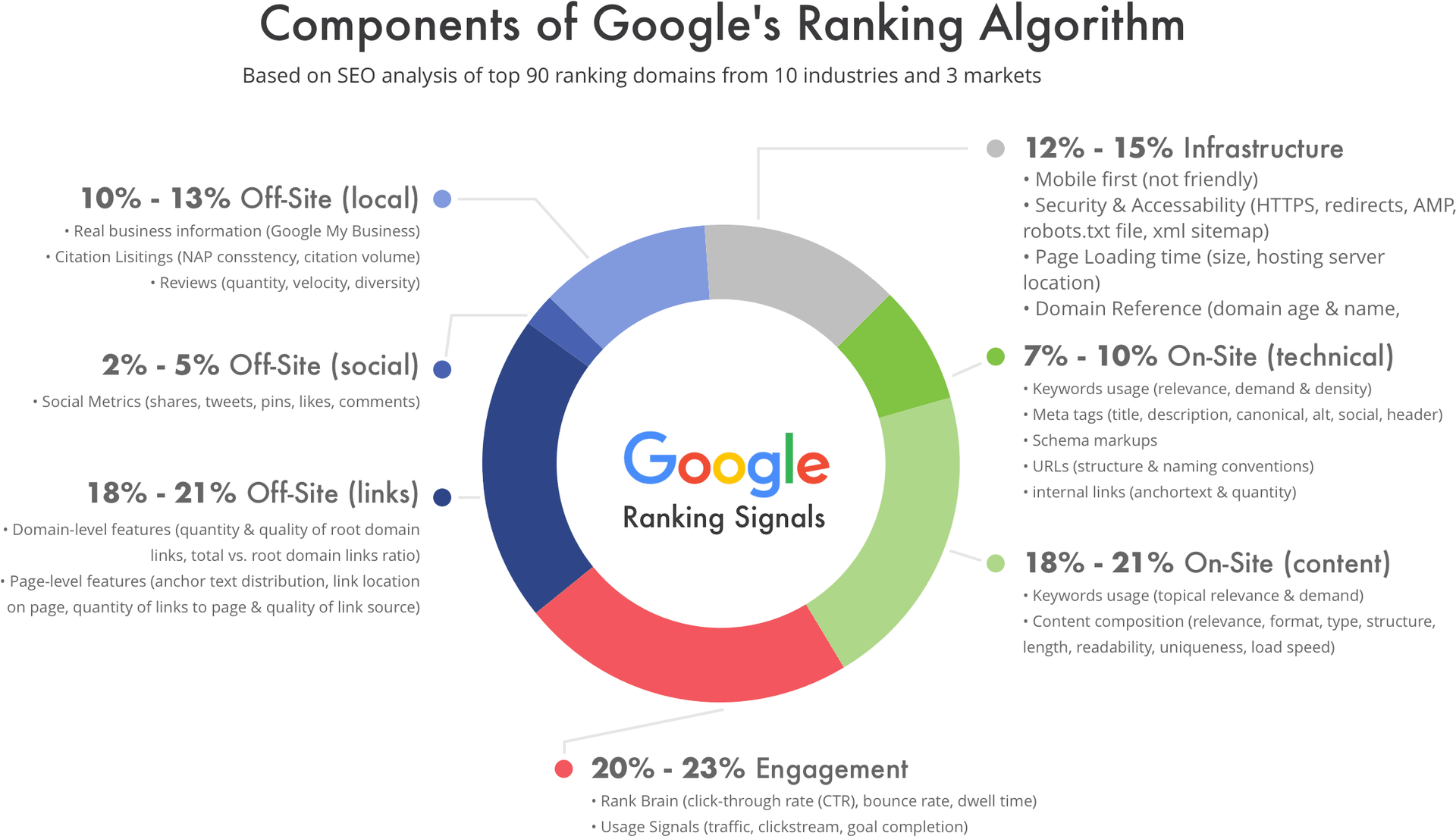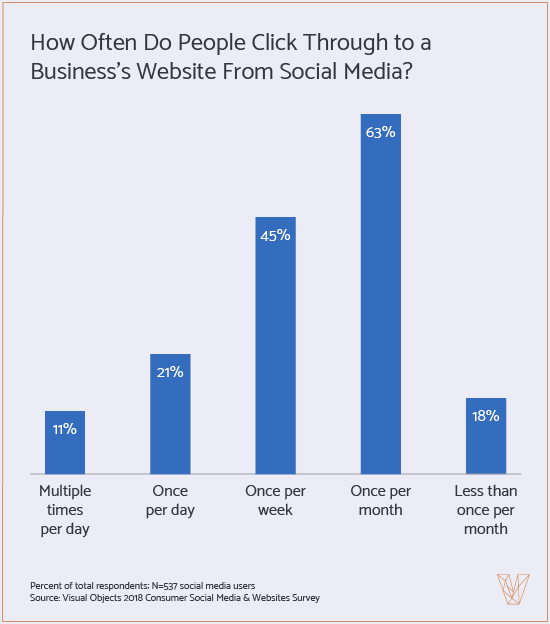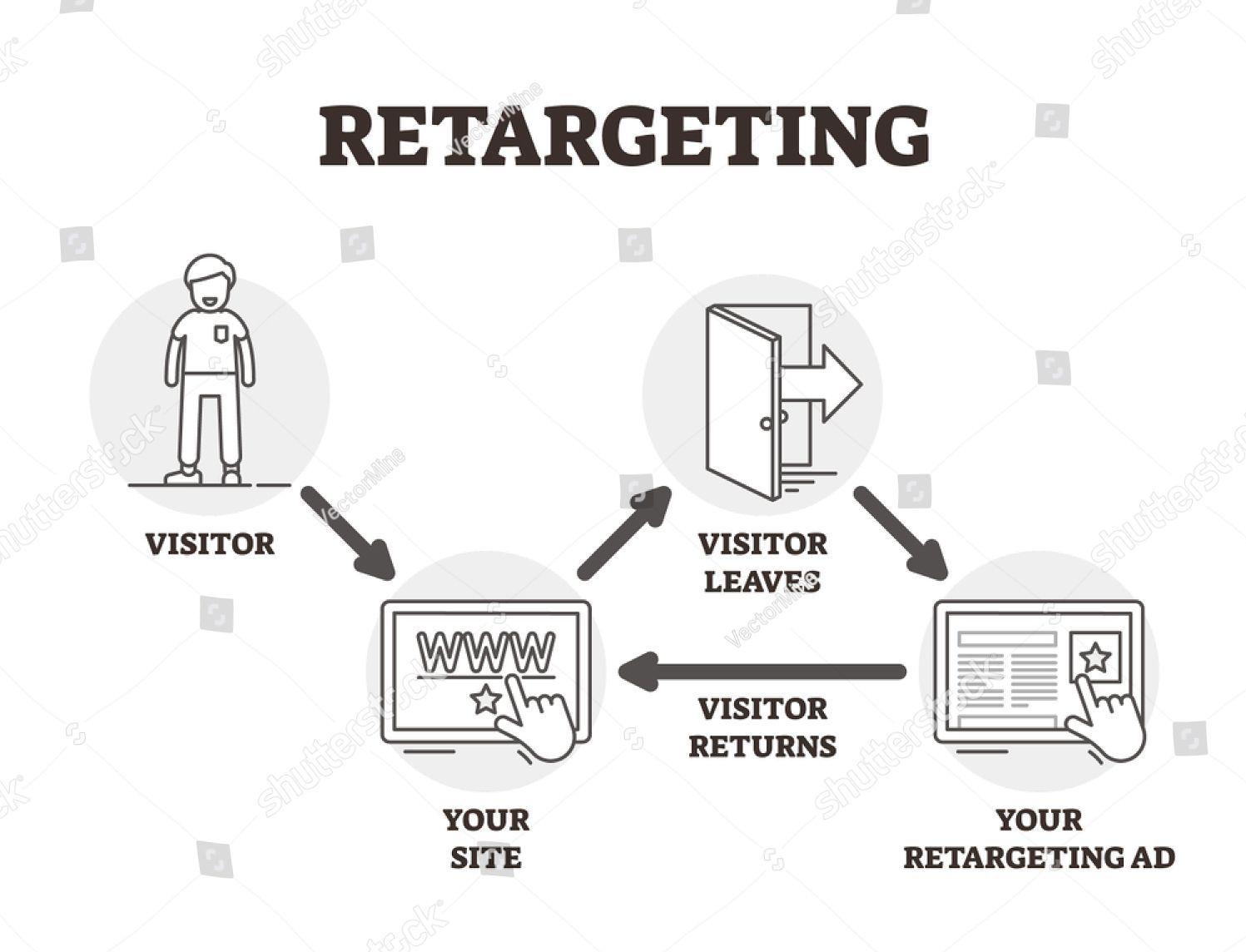Follow Us
10 Street Name, City Name
Country, Zip Code
555-555-5555
myemail@mailservice.com
12 Ways To Increase Website Traffic
Top 12 Digital Marketing Tips to Increase Website Traffic
In today's digital age, having a strong online presence is crucial for businesses to succeed. One of the key aspects of building a strong online presence is increasing website traffic. Without a steady stream of visitors to your website, it can be challenging to generate leads, make sales, and grow your business. Fortunately, there are a variety of digital marketing strategies that can help you attract and engage more visitors to your website. In this blog post, we will explore the top 12 digital marketing tips to increase website traffic and help you take your online presence to the next level. Whether you are just starting out or looking to improve your existing website traffic, these tips will provide valuable insights and strategies to help you succeed.

1. Search engine optimization (SEO)
Search engine optimization (SEO) is a digital marketing strategy that can help increase website traffic by improving your website's visibility and ranking on search engine results pages (SERPs). Here are some of the ways SEO can help increase website traffic:
- Improved Visibility: SEO helps to optimize your website's content and structure to make it more visible to search engines. By using relevant keywords, optimizing your website's architecture, and improving the quality of your content, you can improve your website's visibility on search engine results pages.
- Increased Organic Traffic: SEO can help increase organic traffic to your website by improving your website's ranking on search engine results pages. By appearing higher on the SERPs, you are more likely to attract clicks and visits from users searching for relevant keywords and phrases.
- Targeted Traffic: SEO can help attract targeted traffic to your website by optimizing your website's content and keywords to match user search queries. By targeting specific keywords and phrases, you can attract visitors who are more likely to be interested in your products or services.
- Trust and Credibility: SEO can help establish your website as a trustworthy and credible source of information. By optimizing your website for search engines, you can provide a better user experience and demonstrate your expertise and authority in your industry.
- Long-Term Results: SEO can provide long-term results, allowing you to continue to attract organic traffic to your website over time. By continuously optimizing your website's content and structure, you can maintain your ranking on search engine results pages and continue to attract visitors to your website.
Overall, SEO is a powerful marketing strategy that can help increase website traffic by improving your website's visibility, attracting targeted traffic, establishing trust and credibility, and providing long-term results. By incorporating SEO into your marketing strategy, you can attract more visitors to your website and increase your chances of converting them into customers.
2. Content marketing
Content marketing is a digital marketing strategy that involves creating and sharing valuable, relevant, and consistent content to attract and retain a clearly defined audience and, ultimately, drive profitable customer action. Here are some of the ways content marketing can help increase website traffic:
- SEO: Content marketing can improve your website's search engine optimization (SEO) by providing high-quality content that is relevant to your target audience and contains relevant keywords. By optimizing your content for SEO, you can increase your website's visibility on search engine results pages (SERPs) and attract more organic traffic to your website.
- Shareability: Creating shareable content can increase your brand's reach and exposure on social media and other platforms. By creating valuable and informative content that resonates with your target audience, you can encourage them to share your content with their own networks, increasing the likelihood of it going viral and attracting more visitors to your website.
- Brand Awareness: Content marketing can help increase brand awareness by establishing your brand as a thought leader and authority in your industry. By creating informative and educational content that addresses your target audience's pain points and challenges, you can build trust and credibility with your audience, increasing the likelihood of them visiting your website and becoming customers.
- Lead Generation: Creating content that offers value to your target audience can also help generate leads and attract more visitors to your website. By offering free resources, such as e-books, whitepapers, and webinars, that provide valuable insights and solutions to your target audience's challenges, you can encourage them to sign up for your email list and visit your website for more information.
- Evergreen Content: Creating evergreen content, which is content that remains relevant and valuable over time, can attract consistent traffic to your website. By creating content that addresses perennial topics and challenges in your industry, you can attract visitors to your website who are searching for information on those topics, increasing your website's traffic over time.
Overall, content marketing is a powerful marketing strategy that can help increase website traffic by improving SEO, increasing
shareability, building brand awareness, generating leads, and creating evergreen content. By incorporating content marketing into your marketing strategy, you can attract more visitors to your website and increase your chances of converting them into customers.

3. Social media marketing
Social media marketing is a digital marketing strategy that involves promoting your brand or website through various social media platforms, such as Facebook, Twitter, Instagram, LinkedIn, and others. Here are some of the ways social media marketing can help increase website traffic:
- Increased Visibility: Social media platforms have millions of users, providing a massive audience for your brand to reach. By creating engaging content and sharing it on social media, you can attract followers who may not have been aware of your brand previously, increasing the likelihood of them visiting your website.
- Targeted Advertising: Social media platforms also offer powerful advertising tools that allow you to target specific audiences based on demographic data, interests, behaviors, and more. By creating targeted ads and promoting them on social media, you can attract visitors to your website who are more likely to be interested in your products or services.
- Improved SEO: Social media can also help improve your website's search engine optimization (SEO) by increasing your brand's online presence and driving traffic to your website. By sharing links to your website on social media, you can improve your website's authority and ranking on search engine results pages (SERPs).
- Engagement: Social media platforms offer various engagement tools, such as likes, comments, shares, and retweets, that can help increase your brand's visibility and reach. By creating engaging content that encourages followers to interact with your brand, you can attract more visitors to your website and increase your brand's exposure.
- Brand Awareness: Social media can also help increase brand awareness by providing a platform for your brand to showcase its values, mission, and personality. By creating a strong brand identity and sharing it on social media, you can build trust and credibility with your audience, increasing the likelihood of them visiting your website and becoming customers.
Overall, social media marketing is a powerful marketing strategy that can help increase website traffic by increasing visibility, targeting specific audiences, improving SEO, encouraging engagement, and building brand awareness. By incorporating social media marketing into your marketing strategy, you can attract more visitors to your website and increase your chances of converting them into customers.

4. Email marketing
Email marketing is an effective way to drive traffic to your website by promoting your content and products to your subscribers. By creating engaging emails and offering special deals and promotions, you can encourage your subscribers to click through to your site and engage with your brand. Email marketing also includes building your email list, segmenting your audience, and tracking your email campaign performance. Here's some other ways it may help:
- Direct Traffic: Email marketing allows you to send targeted messages directly to your subscribers' inboxes, driving them directly to your website. By including links to your website in your emails, you can encourage subscribers to click through and visit your website.
- Personalization: Email marketing allows you to personalize your messages based on subscribers' preferences and behaviors, making them more relevant and engaging. By sending personalized emails with relevant content and promotions, you can increase the likelihood of subscribers clicking through to your website.
- Lead Nurturing: Email marketing is an effective way to nurture leads and move them through your sales funnel. By sending targeted messages to subscribers at different stages of the sales cycle, you can provide them with valuable information and incentives to visit your website and learn more about your products or services.
- Retargeting: Email marketing can be used for retargeting purposes, helping to bring back visitors who have abandoned their shopping carts or left your website without taking any action. By sending targeted emails with incentives or reminders to these visitors, you can encourage them to revisit your website and complete their desired action.
- Referral Traffic: Email marketing campaigns can include social sharing buttons, encouraging subscribers to share your content with their networks. This can increase the reach of your content and drive referral traffic to your website.
Overall, email marketing is a powerful marketing tool that can help increase website traffic by providing direct traffic, personalization, lead nurturing, retargeting, and referral traffic. By incorporating email marketing into your marketing strategy, you can attract more visitors to your website and increase your chances of converting them into customers.
5. Guest posting
Guest posting is a digital marketing strategy that involves writing and publishing content on another website or blog to promote your own brand or website. Here are some of the ways guest posting can help increase website traffic:
- Increased Visibility: Guest posting on other websites or blogs can increase your brand's visibility and exposure to a wider audience. By publishing high-quality content on authoritative websites in your niche or industry, you can attract readers who may not have been aware of your brand previously, increasing the likelihood of them visiting your website.
- Improved SEO: Guest posting can also help improve your website's search engine optimization (SEO) by building backlinks to your website. By including links to your website in your guest posts, you can improve your website's authority and ranking on search engine results pages (SERPs).
- Targeted Audience: Guest posting on websites or blogs in your niche or industry can help you reach a targeted audience who are interested in your products or services. By providing valuable and informative content that resonates with their readers, you can attract visitors to your website who are more likely to be interested in what you have to offer.
- Networking: Guest posting can also help you build relationships with other bloggers and website owners in your industry. By reaching out to them and providing high-quality content, you can establish yourself as an authority in your field and potentially collaborate with them in the future, increasing your website's exposure even further.
- Brand Awareness: Guest posting can help increase brand awareness by showcasing your brand's expertise and knowledge in your industry. By providing valuable content that educates and informs readers, you can build trust and credibility with your audience, increasing the likelihood of them visiting your website and becoming customers.
Overall, guest posting is a powerful marketing strategy that can help increase website traffic by increasing visibility, improving SEO, reaching a targeted audience, networking with other bloggers, and building brand awareness. By incorporating guest posting into your marketing strategy, you can attract more visitors to your website and increase your chances of converting them into customers.

6. Influencer marketing
Influencer marketing is a digital marketing strategy that can help increase website traffic by partnering with influencers to promote your brand, products, or services to their followers. Here are some of the ways influencer marketing can help increase website traffic:
- Targeted Audience: Influencer marketing allows you to reach a targeted audience who are interested in your niche or industry. By partnering with influencers who have a large following in your target market, you can attract visitors to your website who are more likely to be interested in your products or services.
- Increased Trust: Influencers are seen as trusted sources of information and recommendations by their followers. By partnering with influencers, you can leverage their trust and credibility to promote your brand, increasing the likelihood of their followers visiting your website and becoming customers.
- Improved Brand Awareness: Influencer marketing can help increase brand awareness by reaching a larger audience who may not have been aware of your brand previously. By partnering with influencers who have a large following, you can expose your brand to a wider audience, increasing the likelihood of them visiting your website and becoming customers.
- Authentic Content: Influencer marketing allows you to create authentic content that resonates with your target audience. By partnering with influencers who align with your brand values and messaging, you can create content that is both engaging and informative, increasing the likelihood of their followers visiting your website and becoming customers.
- Social Media Traffic: Influencer marketing is often carried out on social media platforms, such as Instagram, YouTube, or TikTok. By leveraging these platforms, you can attract traffic to your website through links in the influencer's bio, swipe-up links, or other calls-to-action in their content.
Overall, influencer marketing is a powerful marketing strategy that can help increase website traffic by reaching a targeted audience, increasing trust and credibility, improving brand awareness, creating authentic content, and leveraging social media traffic. By incorporating influencer marketing into your marketing strategy, you can attract more visitors to your website and increase your chances of converting them into customers.
7. Video marketing
Video marketing is a digital marketing strategy that can help increase website traffic by using videos to promote your brand, products, or services. Here are some of the ways video marketing can help increase website traffic:
- Improved Engagement: Video content is more engaging than other types of content, such as text or images. By using video to tell your brand story, demonstrate your products or services, or provide educational content, you can capture your audience's attention and keep them engaged for longer periods of time.
- Increased Visibility: Video content is highly shareable and can be distributed on multiple channels, such as social media, email, and websites. By sharing your videos on various platforms, you can increase your brand's visibility and attract more traffic to your website.
- Improved SEO: Video content can also help improve your website's search engine optimization (SEO) by providing valuable content for search engines to crawl and index. By optimizing your video content with relevant keywords and metadata, you can improve your website's ranking on search engine results pages (SERPs).
- Brand Awareness: Video marketing can help increase brand awareness by providing a memorable and engaging way to showcase your brand personality, values, and products. By using video to tell your brand story, you can build trust and credibility with your audience, increasing the likelihood of them visiting your website and becoming customers.
- Higher Conversion Rates: Video content can also help increase your website's conversion rates by providing a visual and interactive way to showcase your products or services. By using video to demonstrate your product features or provide customer testimonials, you can increase your audience's trust and confidence in your brand, leading to higher conversion rates.
Overall, video marketing is a powerful marketing strategy that can help increase website traffic by improving engagement, increasing visibility, improving SEO, building brand awareness, and increasing conversion rates. By incorporating video marketing into your marketing strategy, you can attract more visitors to your website and increase your chances of converting them into customers.
8. Pay-per-click (PPC) advertising
Pay-per-click (PPC) advertising is a digital marketing strategy that can help increase website traffic by placing targeted ads on search engine results pages (SERPs) and other websites. Here are some of the ways PPC advertising can help increase website traffic:
- Targeted Traffic: PPC advertising allows you to target specific keywords, locations, demographics, and interests, ensuring that your ads are seen by the most relevant audience. By targeting the right audience, you can attract visitors who are more likely to be interested in your products or services, increasing the likelihood of them clicking through to your website.
- Increased Visibility: PPC advertising can help increase your website's visibility on search engine results pages, even if your website is not currently ranking well in organic search results. By placing ads at the top of search engine results pages, you can attract clicks and visits from users searching for relevant keywords and phrases.
- Fast Results: PPC advertising can provide fast results, allowing you to attract traffic to your website within a short period of time. Unlike SEO, which can take time to see results, PPC advertising allows you to see immediate traffic increases.
- Measurable Results: PPC advertising provides detailed analytics and reporting, allowing you to track and measure the effectiveness of your ads. By analyzing data such as click-through rates, conversion rates, and cost per click, you can optimize your ads to improve their performance and attract more traffic to your website.
- Cost-Effective: PPC advertising can be a cost-effective marketing strategy, allowing you to set a budget and only pay for clicks or impressions. By carefully targeting your ads and optimizing their performance, you can attract traffic to your website while keeping costs low.
Overall, PPC advertising is a powerful marketing strategy that can help increase website traffic by attracting targeted traffic, increasing visibility, providing fast and measurable results, and being cost-effective. By incorporating PPC advertising into your marketing strategy, you can attract more visitors to your website and increase your chances of converting them into customers.

9. Retargeting
Retargeting is a form of online advertising that targets users who have previously visited your website with relevant ads on other websites and social media platforms. This form of advertising is a powerful way to improve website traffic because it allows you to reconnect with users who have already expressed an interest in your brand and products or services.
Here's how retargeting works to help increase website traffic:
- Improves brand recall: When a user visits your website, they may not immediately convert or make a purchase. Retargeting helps to keep your brand top of mind by showing relevant ads to these users as they browse other websites and social media platforms. This increases the chances that they will return to your website to complete the desired action, such as making a purchase or filling out a form.
- Increases click-through rates: Retargeted ads are highly targeted, and therefore more relevant to users who have previously visited your website. This increases the likelihood that they will click on the ad and return to your website. Additionally, retargeted ads are often displayed in prominent positions, such as at the top of a webpage, which can further increase click-through rates.
- Boosts conversions: Users who have previously visited your website are more likely to convert than those who are completely new to your brand. By retargeting these users with relevant ads, you can increase the likelihood that they will convert and make a purchase, sign up for a newsletter, or complete another desired action.
- Improves ad ROI: Retargeting is a cost-effective advertising strategy because it targets users who have already shown an interest in your brand. This means that you are more likely to see a return on investment (ROI) for your advertising spend, as retargeted ads are more likely to convert than ads targeted at completely new users.
Overall, retargeting is a powerful way to improve website traffic by re-engaging with users who have previously visited your website. By showing them relevant ads as they browse other websites and social media platforms, you can increase brand recall, click-through rates, conversions, and ad ROI.
10. Webinars
Webinars are a powerful marketing tool that can help increase website traffic in several ways. Here are some of the ways webinars can help increase website traffic:
- Generate Interest: Webinars are a great way to generate interest in your brand and products/services. By hosting a webinar on a topic that your target audience is interested in, you can attract a wider audience and create a buzz around your brand. This can lead to increased website traffic as attendees visit your website to learn more about your brand and offerings.
- Attract Qualified Leads: Webinars are an effective way to attract qualified leads to your website. By promoting your webinar to your target audience and encouraging them to register, you can attract people who are genuinely interested in your brand and offerings. These leads are more likely to engage with your website and become customers, leading to increased website traffic and revenue.
- Build Relationships: Webinars are a great way to build relationships with your target audience. By providing valuable information and insights during your webinar, you can establish your brand as an authority in your industry and build trust with your audience. This can lead to increased website traffic as attendees visit your website to learn more about your brand and offerings.
- Drive Traffic to Landing Pages: Webinars can be used to drive traffic to specific landing pages on your website. By including links to landing pages in your webinar presentation and follow-up emails, you can direct attendees to pages where they can learn more about your offerings and take specific actions, such as filling out a form or making a purchase. This can lead to increased website traffic and conversions.
- Increase Social Media Engagement: Webinars can be promoted on social media platforms, which can increase engagement and drive traffic to your website. By using social media to promote your webinar and encourage attendees to share it with their networks, you can attract a wider audience and increase website traffic.
Overall, webinars are a powerful marketing tool that can help increase website traffic by generating interest, attracting qualified leads, building relationships, driving traffic to landing pages, and increasing social media engagement. By using webinars as part of your marketing strategy, you can attract more visitors to your website and increase your chances of converting them into customers.
11. Podcasts
Podcasts are a popular form of audio content that can help increase website traffic in several ways. Here are some of the ways podcasts can help increase website traffic:
- Reach a Wider Audience: Podcasts are an effective way to reach a wider audience beyond your website visitors. By promoting your podcast on various platforms such as Apple Podcasts, Spotify, and Google Podcasts, you can attract new listeners who may not have been aware of your brand before. This can lead to increased website traffic as listeners visit your website to learn more about your brand and offerings.
- Build a Loyal Following: Podcasts can help you build a loyal following of listeners who are interested in your brand and offerings. By consistently delivering high-quality content that resonates with your target audience, you can establish your brand as an authority in your industry and build trust with your listeners. This can lead to increased website traffic as listeners visit your website to learn more about your brand and offerings.
- Cross-Promotion Opportunities: Podcasts provide opportunities for cross-promotion with other brands and influencers in your industry. By appearing as a guest on other podcasts or inviting guests to appear on your podcast, you can expand your reach and attract new listeners who may not have been aware of your brand before. This can lead to increased website traffic as listeners visit your website to learn more about your brand and offerings.
- Repurpose Content: Podcasts can be repurposed into other forms of content such as blog posts, videos, and social media content. By repurposing your podcast content into various formats, you can reach a wider audience and attract visitors to your website who prefer different types of content.
- Promote Products and Services: Podcasts provide an opportunity to promote your products and services to a captive audience. By including calls-to-action in your podcast episodes and providing listeners with links to relevant landing pages on your website, you can drive traffic to your website and increase conversions.
Overall, podcasts are a powerful marketing tool that can help increase website traffic by reaching a wider audience, building a loyal following, providing cross-promotion opportunities, repurposing content, and promoting products and services. By incorporating podcasts into your marketing strategy, you can attract more visitors to your website and increase your chances of converting them into customers.
12. Infographics
Infographics are a visual representation of information or data that can help increase website traffic in several ways. Here are some of the ways infographics can help increase website traffic:
- Grab Attention: Infographics are eye-catching and visually appealing, making them a great way to grab the attention of your target audience. By using bold colors, interesting graphics, and easy-to-read fonts, you can create an infographic that stands out and attracts visitors to your website.
- Shareable Content: Infographics are highly shareable content, which means that they can be easily shared on social media platforms, blogs, and other websites. By including your website URL in your infographic, you can drive traffic to your website as people share and link back to your content.
- Search Engine Optimization (SEO): Infographics can help improve your website's SEO by generating backlinks from other websites. When other websites link to your infographic, it signals to search engines that your website is a credible source of information. This can help increase your website's search engine rankings and drive more traffic to your website.
- Brand Awareness: Infographics can help increase brand awareness by showcasing your brand's unique personality and expertise. By creating infographics that provide valuable information or insights related to your industry, you can establish your brand as an authority in your field and attract visitors to your website who are interested in learning more about your brand and offerings.
- Increased Engagement: Infographics are an engaging form of content that can help increase user engagement on your website. By including infographics on your website, you can provide visitors with a more interactive and interesting experience, which can encourage them to spend more time on your website and explore your other content.
Overall, infographics are a powerful marketing tool that can help increase website traffic by grabbing attention, providing shareable content, improving SEO, increasing brand awareness, and increasing engagement. By incorporating infographics into your marketing strategy, you can attract more visitors to your website and increase your chances of converting them into customers.
In conclusion, increasing website traffic requires a combination of strategies that work together to attract and engage visitors. The 12 ways to increase website traffic we have discussed in this blog post include optimizing your website for search engines, using social media marketing, creating valuable content, leveraging email marketing, and utilizing paid advertising. By implementing these strategies, you can drive more traffic to your website, increase your brand's visibility and authority, and ultimately, grow your business. It's important to remember that increasing website traffic is a continuous process that requires ongoing effort and optimization. So, take the time to experiment with different strategies, analyze your results, and refine your approach to achieve the best possible results.
Ready to take your marketing up a notch?
DMS Digital LLC



